Get the weekly SPARTANAT newsletter.
Your bonus: the free E-Book from SPARTANAT.
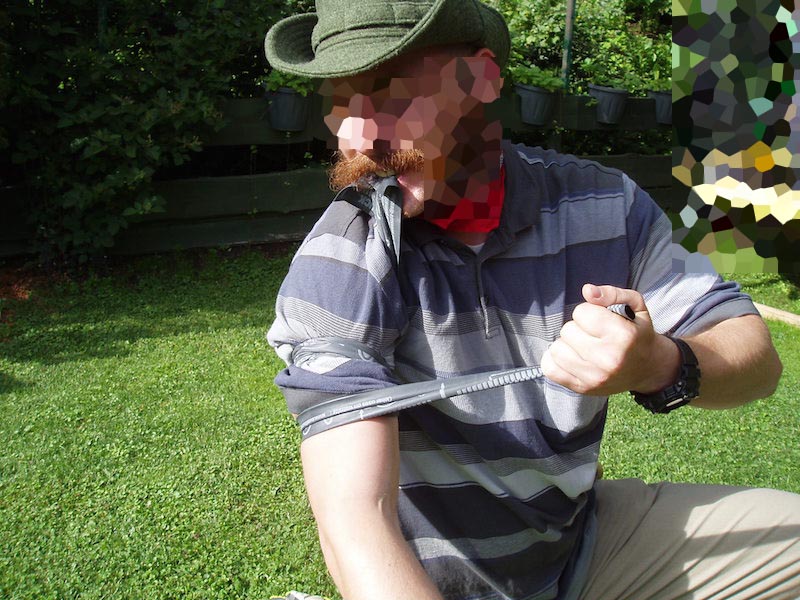
The company TEMS Solutions has brought the product SWAT-T to the market some time ago. TEMS Solutions promotes this tourniquet with an incredibly wide range of uses. Like a medical wonder sponge. Let's see if it lives up to its promises. We took a closer look at it and played around with it. 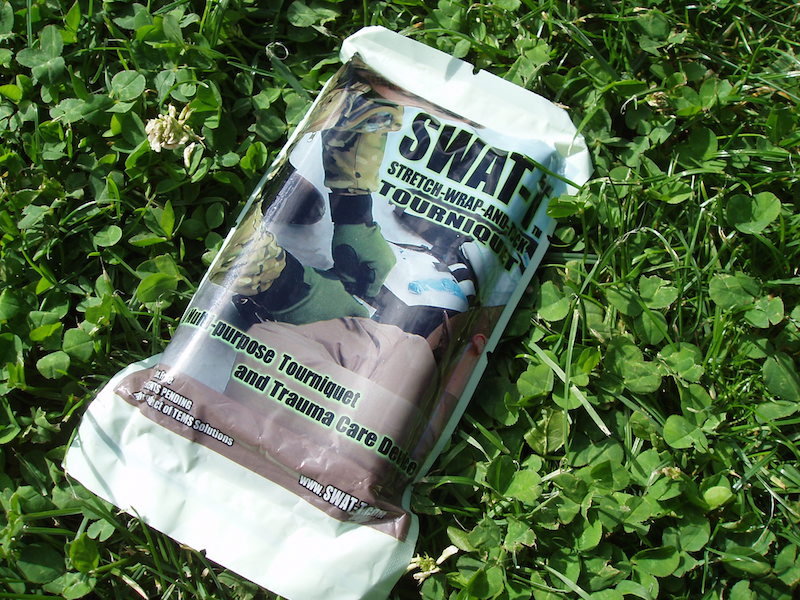
What is it in essence? In essence, the blood clasp is a 10 cm wide and 125 cm long rubber band, somewhat more flexible than what you might know from bicycle inner tubes. This definitely keeps production costs low. Which also explains the affordable price, which is one of the strengths of the SWAT-T. However, you end up with a thing that smells like a garage. In other words, it's a stretchier version of an Esmarch bandage, as you find in the operating room and in veterinary medicine. 
Blood clasp properties: Let's take a look at the requirements a tourniquet needs to meet: it should have a certain minimum width (to minimize nerve damage) and it should be rigid to maintain constant pressure, and it should be operable with one hand in a military context (likely also in a sensible civilian context). At first glance, the first point is met, the second one is not due to the design, and the third one is only partially met. So the SWAT-T would have already failed as a blood clasp, but let's test it out first. 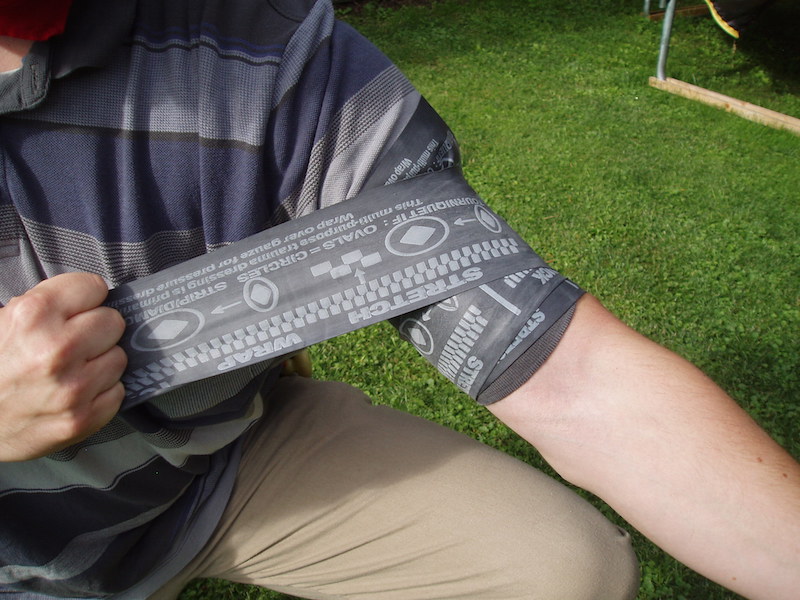
Application: If you have both hands free, this is easy. Simply stretch the rubber band until oval circles turn into squares. The instructions are printed on the SWAT-T itself. 
Then wrap it around the limb (in darkness, stretch it as far as possible). Once done, just tuck the remaining end somewhere under the wrapping and you're done. With correct application, like with any blood clasp, distally there should be no pulse felt and the bleeding should be stopped. 
One-handed application: Applying it with just the weaker hand alone is a challenge. Basically, you have to grab the loose end with your teeth (if you still have teeth, jaw not broken, etc.) and pull with your hand as hard as you can. It turns out that the medically useful width (compared to R.A.T.S. - HERE with us at SPARTANAT in the Review) gets twisted into a thin band during work, leading to potentially avoidable secondary damages. So two out of three points are not met, and the third - one-handed use - is only partially met.
Fixation problem: Once the SWAT-T is applied, it is important not to touch it during transport, as it may come loose and the bleeding will start again. Also, if the constricted limb is moved - due to the elasticity of the material - the artery becomes free again, causing the bleeding to start over. It should be noted that if not properly applied, it only causes vein congestion - meaning the wound may bleed even more than without the tourniquet (this is generally true for all tourniquets). Therefore, the SWAT-T should definitely not be used as a first-choice blood clasp. 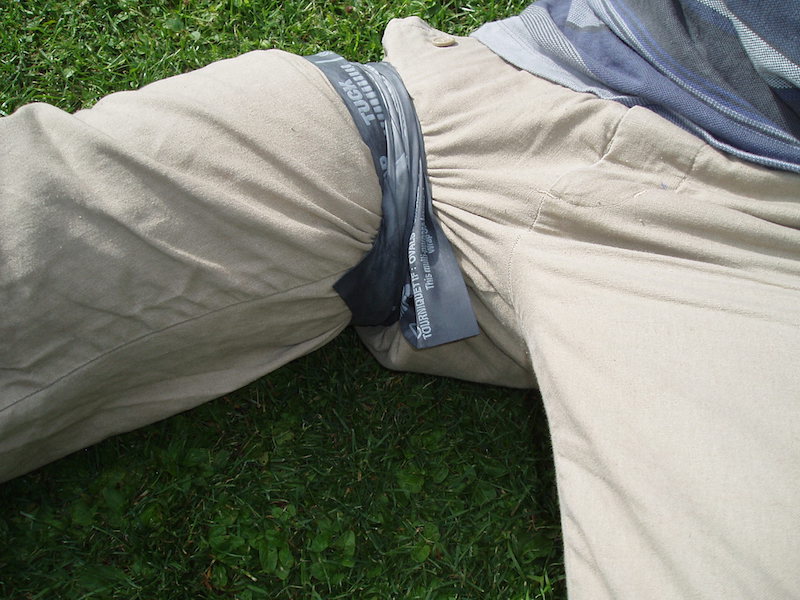
Since we also like to misuse our equipment, we have come up with some other, more practical scenarios for use.
When used with wound dressings, the SWAT-T can be excellent as a compression bandage. For this use, it is almost too good (except for the lack of absorbency), so one should always strive to perform a proper mobility-blood flow-sensitivity check. The vein-congesting property can be useful to facilitate easier vascular access, whether for intravenous fluid therapy or other parenteral infusions.
Below is a comparison with a similar material from veterinary medicine, although the orange band comes in a 15-meter roll: 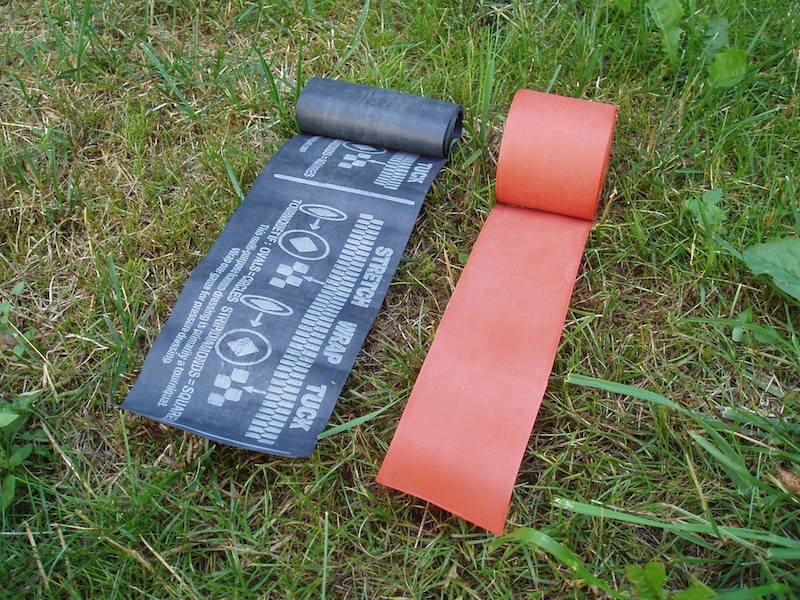
Furthermore, the SWAT-T works great as a support bandage after a sprain, whether on the ankle, knee, or wrist. And for those who know the stress placed on equipment when rescuing injured individuals from debris, inadequate locations, and/or long distances by manpower, it's good to know that the SWAT-T is superior to any gauze bandage or Peha-haft for securing various splints (e.g. SAM). In combination with a few strips of tape, the SWAT-T can also be used as a chest seal for sucking chest wounds. It also works wonderfully as tinder for wet wood, as a substitute for "ranger bands," for patching various equipment parts in the field (like military touring ski bindings, etc.), and so on. This list of misuse could go on for a long time, so it should be clear that the SWAT-T is a useful piece of equipment and has its place in a wide range of scenarios. Just not as a tourniquet.
VERDICT: In our test, the SWAT-T unfortunately failed as a blood clasp, and in our opinion should not primarily be used as one, but the SWAT-T has so many - medical as well as mundane - "off-label use" possibilities that it would be a shame to leave the rubber band at home. Definitely useful for the first aid kit and as a reliable multitool for the medic.
You can purchase the SWAT-T Tourniquet at GEAR MANIACS for Euro 19.90. 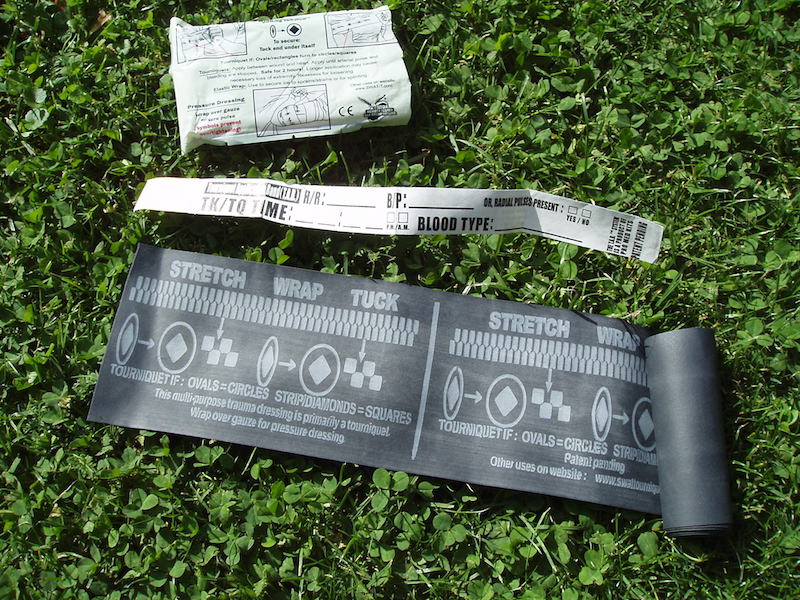 Packaging torn open on the SWAT-T: also included is a note where the most essential patient details can be immediately recorded.
Packaging torn open on the SWAT-T: also included is a note where the most essential patient details can be immediately recorded.
SPARTANAT is the online magazine for Military News, Tactical Life, Gear & Reviews.
Send us your news: [email protected]
Ad
similar
Get the weekly SPARTANAT newsletter.
Your bonus: the free E-Book from SPARTANAT.


